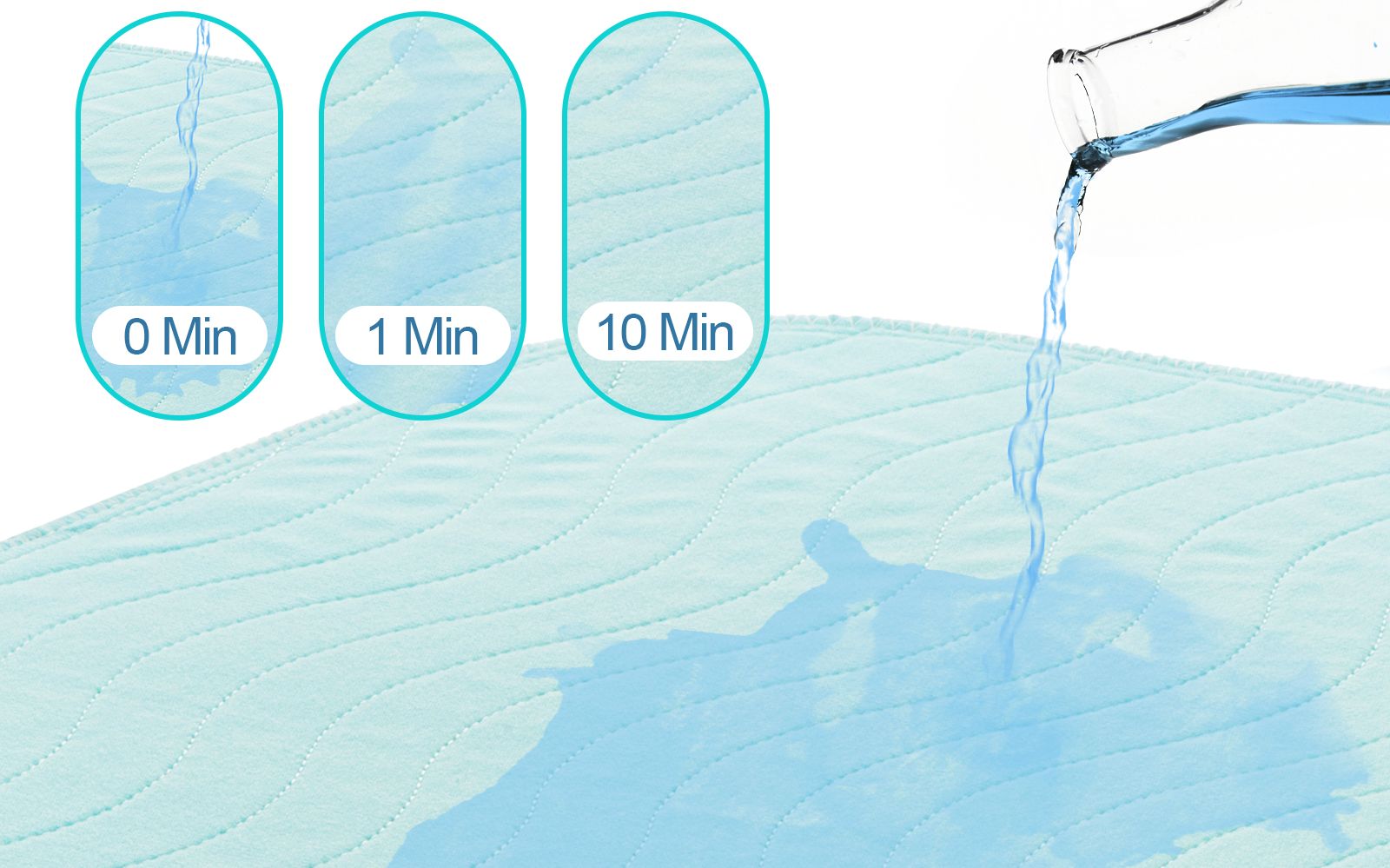In medical facilities – hospitals, clinics, nursing homes, and more – maintaining a high standard of hygiene is not just a best practice; it’s a fundamental necessity for patient safety and infection control. The constant presence of patients with varying medical conditions and the potential for exposure to bodily fluids present ongoing challenges. While complex sterilization procedures and rigorous cleaning protocols are vital, sometimes the simplest tools play a crucial role in the first line of defense. Underpads are one such tool, offering a straightforward yet highly effective solution for maintaining hygiene in medical settings.
1. The Ever-Present Challenge of Hygiene in Healthcare
Medical facilities are environments where infection prevention is paramount. Patients may have open wounds, infections, or incontinence, leading to the potential for spills and contamination from blood, urine, feces, wound exudate, and other bodily fluids. Effectively containing these fluids and preventing their spread is essential to break the chain of infection and protect vulnerable patients and staff.
2. How Underpads Act as a Hygiene Barrier
Underpads, often placed on beds, stretchers, wheelchairs, or examination tables, are designed to serve as a critical hygiene barrier. Their multi-layered construction is key to their effectiveness:
- Rapid Absorption: The absorbent core quickly draws in liquids, moving them away from the surface.
- Containment: The absorbed fluid is trapped within the pad, preventing it from spreading.
- Waterproof Backing: The impermeable bottom layer ensures that moisture does not leak through to the underlying mattress, linens, or furniture.
By effectively absorbing and containing bodily fluids, underpads prevent the primary source of potential contamination from reaching and soiling essential medical equipment and surfaces that are difficult or time-consuming to disinfect between patients.
3. Preventing Cross-Contamination and Infection Spread
The ability of underpads to contain fluids directly contributes to preventing the spread of pathogens:
- Isolation of Contaminants: By trapping fluids within the pad, underpads isolate potential contaminants, reducing the risk of bacteria, viruses, and other microorganisms spreading to linens, mattresses, staff uniforms, or other surfaces.
- Facilitating Aseptic Technique: In procedures involving potential fluid release, underpads provide a contained area for collection, helping to maintain a cleaner operative field and reducing environmental contamination.
- Reducing Airborne Pathogens (Indirectly): By quickly absorbing liquids, underpads reduce the time that fluids might remain exposed, potentially minimizing the aerosolization of pathogens that can occur with drying fluids.
4. Streamlining Cleanup and Reducing Staff Exposure
Hygiene is also about efficient cleanup. Underpads simplify this crucial task:
- Quick Removal of Contaminants: When a spill or incontinence episode occurs on an underpad, the contaminated pad can be quickly and easily removed and disposed of (if disposable) or placed in a designated laundry hamper (if reusable). This minimizes the time that staff are exposed to potentially infectious materials.
- Reducing the Need for Extensive Cleaning: By protecting the underlying surface, underpads often prevent the need for immediate, extensive cleaning or disinfection of mattresses or furniture, which can be time-consuming and disruptive.
- Supporting Protocol Adherence: The ease of use of underpads makes it more likely that staff will follow hygiene protocols promptly and correctly when faced with fluid management.
5. Protecting Valuable Medical Equipment
Mattresses, stretchers, and specialized beds in medical facilities are significant investments. Exposure to bodily fluids can not only stain and damage these items but also create environments where pathogens can persist, even after cleaning. Underpads act as a protective layer, extending the life of this expensive equipment and ensuring it remains hygienic and safe for patient use.
6. Underpads as Part of a Comprehensive Hygiene Strategy
While simple, underpads are a vital component within a broader infection control program. Their effectiveness is maximized when used consistently and in conjunction with other hygiene practices, including hand hygiene, proper disposal protocols, and regular environmental cleaning.
7. Conclusion: A Simple Tool for a Critical Purpose
In the complex landscape of medical care, maintaining impeccable hygiene is non-negotiable. Underpads, with their ability to quickly absorb and contain fluids while providing a waterproof barrier, offer a simple yet profoundly effective solution for this critical purpose. They protect patients from the risks of contaminated environments, safeguard valuable equipment, and facilitate efficient, hygienic cleanup for staff. By recognizing their essential role and ensuring their widespread availability and proper use, medical facilities reinforce their commitment to a cleaner, safer, and healthier environment for everyone within their walls.

